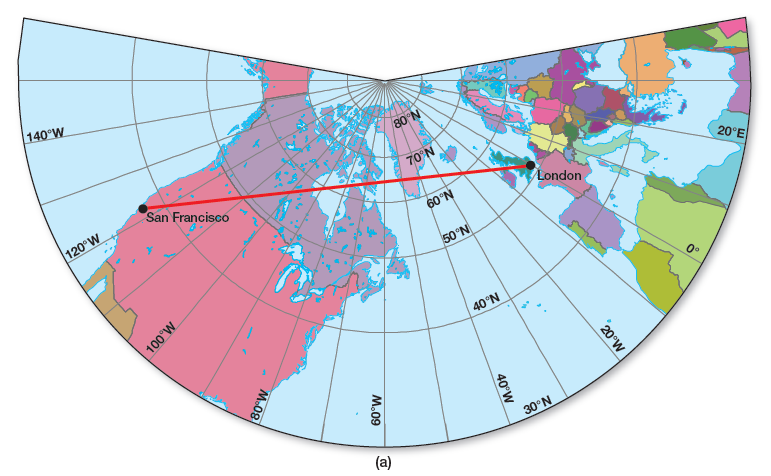Can you show the entire Earth on a single gnomonic projection? If not, why not?
Figure 4.5a shows Earth on a planar projection, in which the globe is projected onto a plane. This is a gnomonic projection and is generated by projecting a light source at the center of a globe onto a plane that is tangent to (touching) the globe’s surface. The resulting increasingly severe distortion as distance increases from the standard point prevents showing a full hemisphere on one projection.

Figure 4.5 (a) Gnomonic/planar projection
No; cannot show anything south of equator
You might also like to view...
Which of the following best describes mycorrhizae?
A) Pathogenic soil bacteria and fungi that destroy plant roots B) Common in soils that lack a functional humus C) Symbiotic fungi that increase soil nutrient uptake in plant roots D) Important soil millipedes that increase aeration of topsoil
Describe convective lifting
What will be an ideal response?
Which of the following is not an example of a dripstone?
A) stalagmite B) stalactite C) cockpits D) soda straw
The collision-coalescence process and the Bergeron process both suggest the same way that precipitation develops from clouds
Indicate whether the statement is true or false